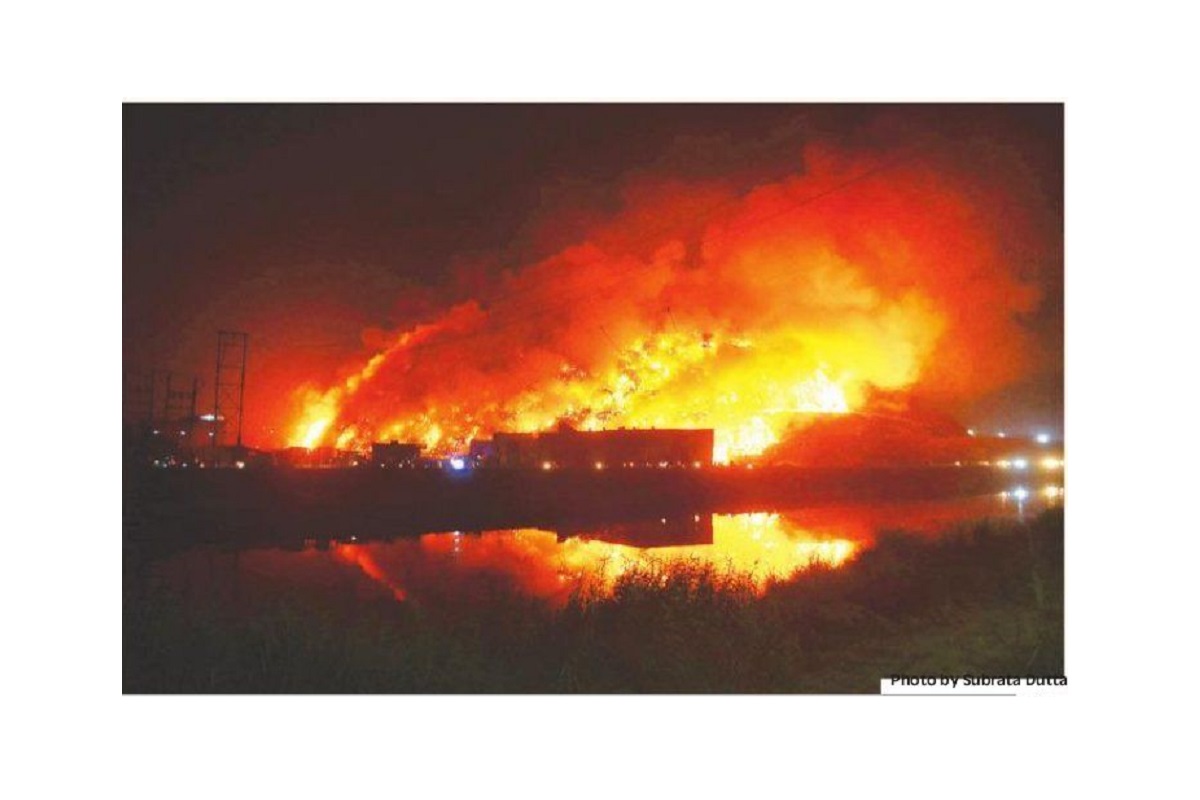After watching Ghazipur and Bhalswa garbage dumps on fire, Delhi’ites now know what happens to garbage, once it leaves their homes. They thought they threw out just a small pack of waste every day.
The recent fires at the garbage dumps brought home the fact that small packs of household waste added up to millions of tonnes of garbage, and formed mountains of sorts on Delhi’s border.
Advertisement
Ghazipur in East Delhi, Bhalswa in North Delhi, and Okhla in South Delhi are now getting identified more with their massive garbage dumps than anything else. Seen from a distance, these dumps can pass off as mountains from the Himalayan or Aravalli ranges. In fact, they are called ‘Mountains of Shame’ as they pollute the air with their stench and particles of waste, all year round and represent Delhi’s failure to safely dispose of its garbage.
The Ghazipur and Bhalswa fires posed a big challenge to the Delhi Fire Service. The firemen found it slippery to climb the mountains and reach the fire spots.
The mountains had unlimited methane deposits under their layers to sustain the fires. As the acrid smoke rose and reached nearby localities, schools were shut. In residential areas, there was no comfort inside or outside homes.
The garbage mountains are producing stinks even without fires and this can be felt miles away. Should one lower car windows while driving past Ghazipur or Bhalswa, one cannot get over the feeling of nausea for miles. Even quickly shutting the windows or switching on the car air conditioner does not help.
It’s a wonder that civic officials passing through the areas never suffered the pollution or felt inspired to inform their seniors about the horrific environment in the area. There is no dearth of studies on the management of municipal solid waste to rectify the situation.
In December 2021, government think-tank Niti-Aayog and the Centre for Science and Environment (CSE) published a report on “Waste-Wise Cities” and narrated the cities’ “Best Practices in Municipal Solid Waste Management.” The civic authorities can benefit from the work done under the centre’s Swachh Bharat Mission.
This mission is now in its second phase and aims to make cities garbage free with efficient waste source segregation, hundred percent door-to-door collection, and complete remedial treatment of the waste material. The authorities will have to quickly adapt and adapt systems that suit Delhi. Thirty percent of Indian urban waste still remains unprocessed.
Why should one proceeding to Chandigarh or Shimla for a holiday be first forced to breathe in the dirty air from the Bhalswa dump? Those travelling to Indirapuram and other areas of Ghaziabad from Nizamuddin Bridge have to face the same problem from the Ghazipur dump. Increasing consumerism has to take the major blame. A few decades back, everybody carried periodic purchases of foodgrains and lentils in paper or cloth bags.
There were no plastic bags to throw away. Now everything is available in plastic bags, not just ready-to-eat snacks. Even fruits and vegetables are brought home in thin plastic carry-bags, in spite of repeated announcements of the ban on their use.
All these packing materials add up to huge household waste. Indian cities today generate between 1.30 lakh and 1.50 lakh metric tonnes (MT) of municipal solid waste every day or roughly 50 million MT per year.
At the current rate, this can jump to 125 million MT a year by 2031! Delhi is a big consumer. Waste processing will be easier if it is segregated as per rules. But if the city goes on throwing into waste bins, as much as it consumes, it cannot expect the existing mountains of garbage to disappear from its border; in fact, their number can only go up!











